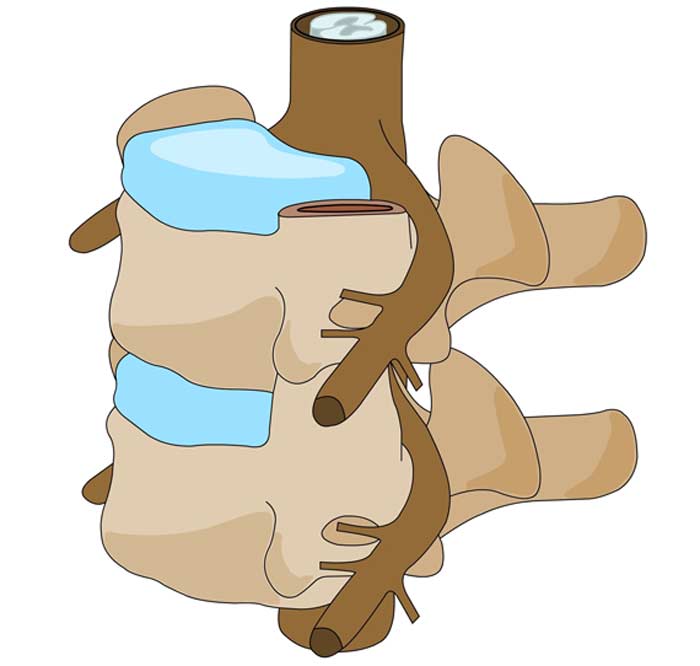
Facet joints are the small joints that help support the movements of the spine.
While these spinal bone connectors are designed to be fairly durable and flexible, they are sometimes affected by underlying health conditions, injuries, or other types of spine-related problems. Injuries can also cause these spinal joints to become inflamed, as can issues related to arthritis of the spine (osteoarthritis). When facet joints are the primary source of discomfort, it’s a condition referred to as facet syndrome (FS).
Facet Syndrome Symptoms
If facet joints in the cervical spine (neck) are injured or affected by inflammation, symptoms may include limited range of motion in the neck and headaches. Pain may also be felt in the upper or middle back areas or in the shoulders. Should the lower back area be affected, related pain may be felt in the lower back, thighs, or buttocks. If facet syndrome symptoms extend beyond the lower back area, discomfort doesn’t usually go past the knees.
The pain and stiffness associated with FS sometimes makes it difficult to stand up straight or get up from a seated position without pain. Some people with this condition also get into the habit of walking in a hunched position. If affected facet joints become excessively enlarged or swollen, openings for nerves may be blocked (facet hypertrophy).


Making a Diagnosis
The most common way to diagnose facet syndrome is to inject the affected joint with a mixture of an anti-inflammatory medication and a local anesthetic. If relief is experienced immediately after the injection is given, a diagnosis of facet syndrome is usually made. If related damage to the spine or nearby spinal discs is suspected, image testing may be done.
Treating Facet Syndrome without Surgery
Initial treatments for facet syndrome usually involve non-surgical efforts. Should the initial diagnostic injection confirm FS, another injection with a longer-acting steroid medication may be given for pain management purposes. Some patients also respond well to the following non-surgical treatments:
- Anti-inflammatory drugs and/or pain medication
- Exercises to help strengthen spine-supporting muscles
- Posture improvement exercises
- Acupuncture or chiropractic adjustments
Surgical Treatments for Facet Syndrome
Surgery may become an option if conservative (non-surgical) treatment efforts aren’t effective. It may be possible to correct facet joint issues with minimally invasive, outpatient surgical procedures. Radiofrequency, thermocoagulation, and neurolysis are among the techniques that may be used to destroy nerve endings on the affected facet joint.
Another option for disrupting signals from nerves is a procedure called a rhizotomy. During the procedure, rear-facing or front-facing spinal nerve roots are severed or burned with an electrified hot probe to stop the transmission of pain signals. If a facet joint has been affected by disc damaged, surgery may be necessary to remove part or all of the damaged disc (discectomy).
Facet joints are like any other joints in that there are some ways to keep them healthy and functioning properly. A common preventative recommendation is to avoid inflammation-causing foods with excessive amounts of sugar (sucrose) and high-fructose corn syrup (HFCS), artificial trans fats, and refined carbs. Maintaining a normal weight and getting regular exercise are additional steps that can be taken to reduce the risk of developing facet syndrome.
